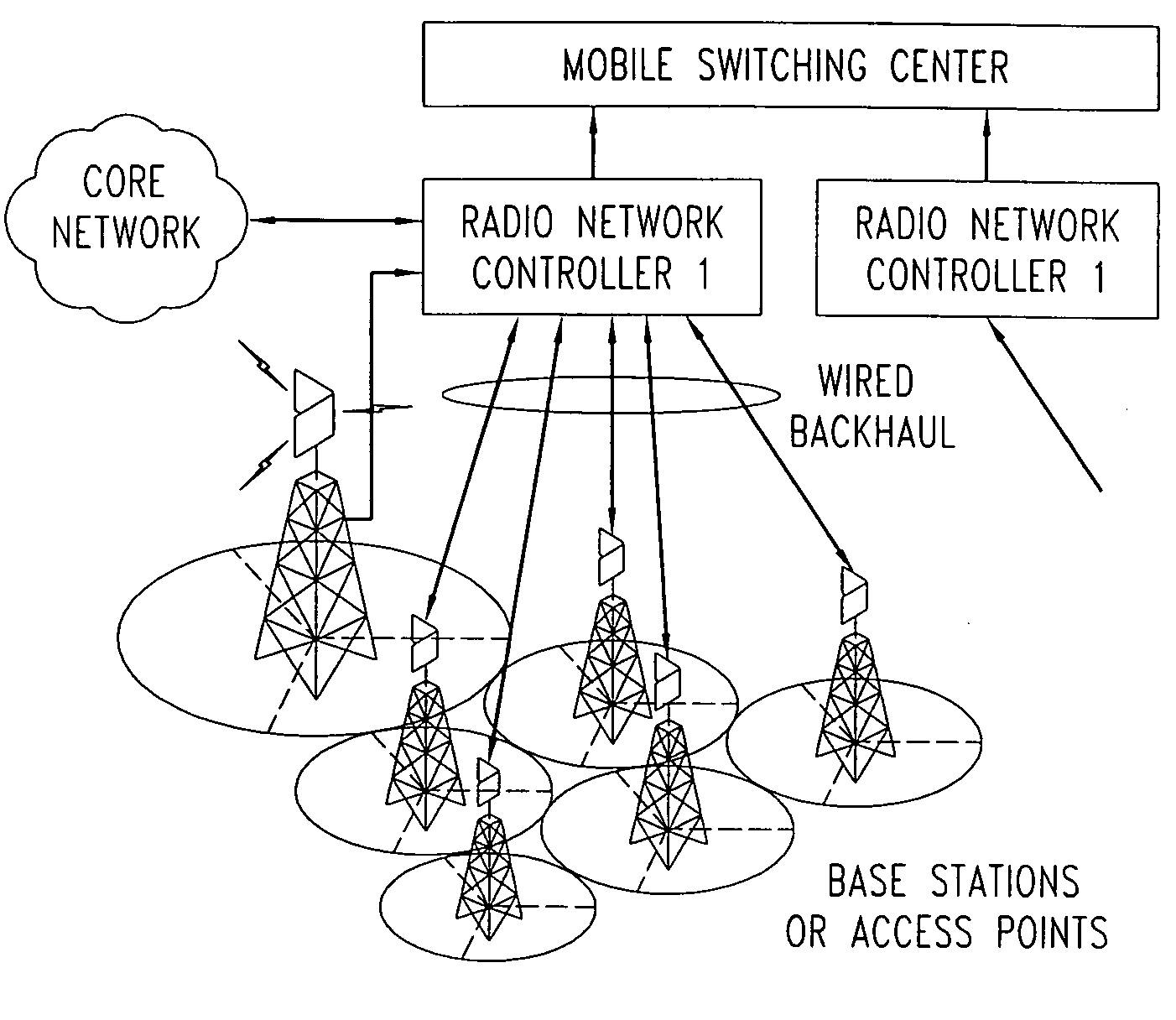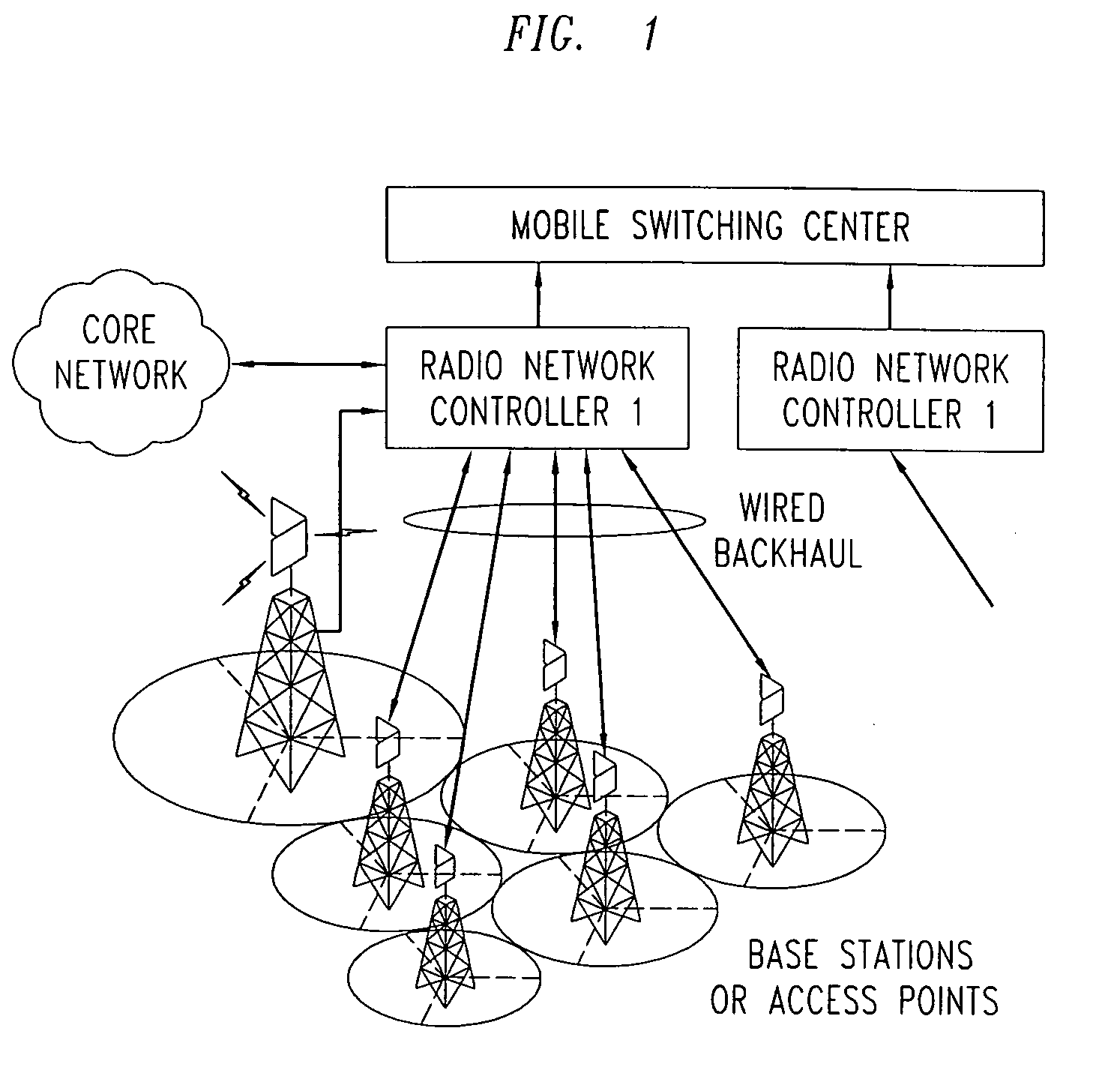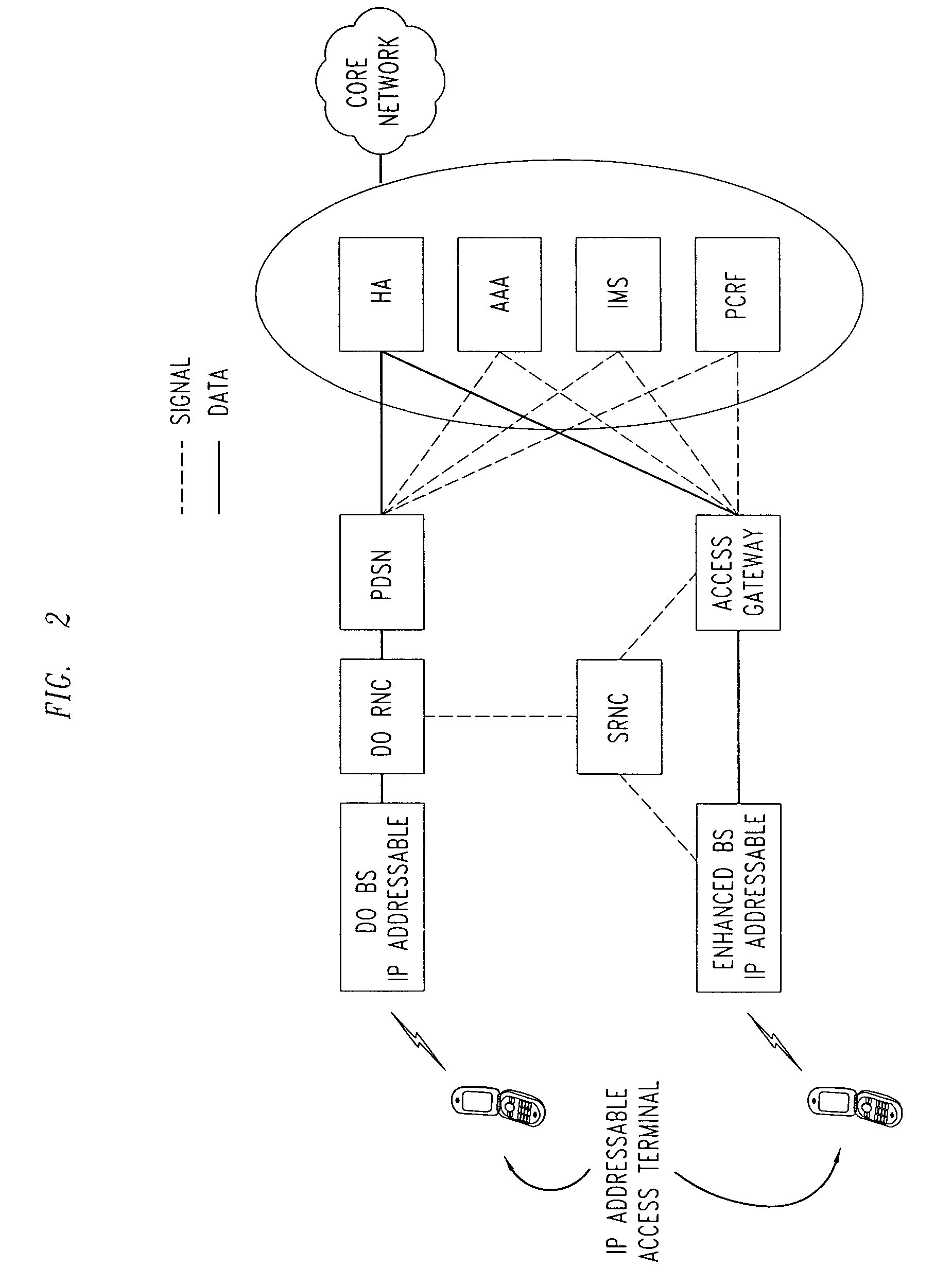Method for routing via access terminals
a technology of access terminals and access terminals, applied in the field of wireless communication systems, can solve the problems of inability to reliably or economically implement dedicated backhaul connections, inability to clearly isolate the root cause from the wired network or the base-station rf chain for several hours, and high cost of access terminals. cost and complexity, the effect of efficient resource allocation
- Summary
- Abstract
- Description
- Claims
- Application Information
AI Technical Summary
Benefits of technology
Problems solved by technology
Method used
Image
Examples
Embodiment Construction
[0042]Wireless access networks are evolving towards packet-switching (as opposed to circuit switching) and end-to-end use of the Internet protocol. Such an evolved packet data wireless access network is shown in FIG. 2. The evolved access network consists of IP-addressable base stations connecting to the core packet data network via edge routers (known as gateways). The interfaces between the evolved base stations and the gateways are IP interfaces. Other signaling and control entities within the access network (that may either be integrated into the base stations or be stand-alone network elements) also use IP protocols.
[0043]Entities in the core network that support the operation of the access network include AAA servers and IMS (IP Multimedia sub-system) nodes to deliver multimedia services over the IP-based network. The top branch in FIG. 2 shows elements of EVDO networks that are currently deployed.
[0044]Concurrently the air-interface protocols between access terminals and base...
PUM
 Login to View More
Login to View More Abstract
Description
Claims
Application Information
 Login to View More
Login to View More - R&D
- Intellectual Property
- Life Sciences
- Materials
- Tech Scout
- Unparalleled Data Quality
- Higher Quality Content
- 60% Fewer Hallucinations
Browse by: Latest US Patents, China's latest patents, Technical Efficacy Thesaurus, Application Domain, Technology Topic, Popular Technical Reports.
© 2025 PatSnap. All rights reserved.Legal|Privacy policy|Modern Slavery Act Transparency Statement|Sitemap|About US| Contact US: help@patsnap.com



